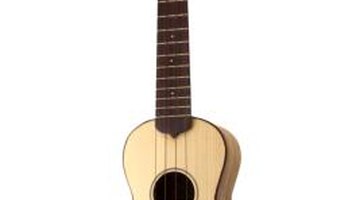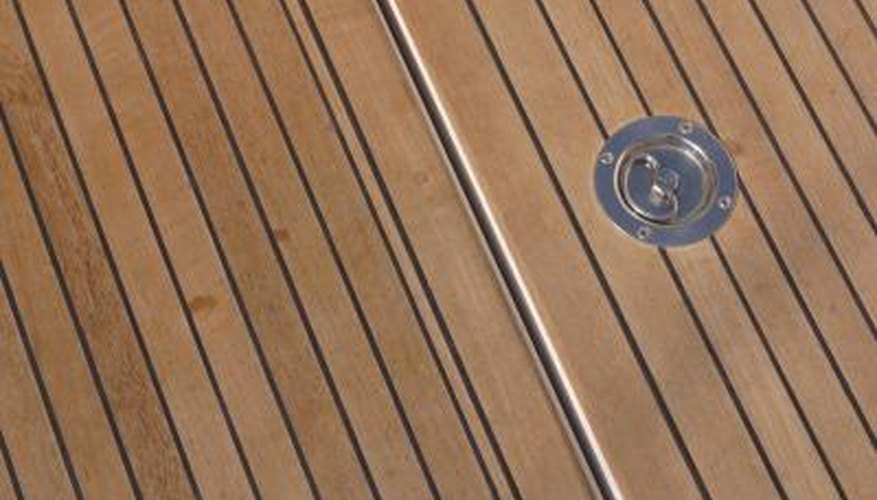Acacia trees grow in Australia, Africa, Asia and America. There are about one thousand species of acacias, some of which make very good timber, including acacia koa wood from Hawaii. Koa wood is used, among other things, to make the famous Hawaiian ukuleles. The teak tree is native to southeast Asia. After being aged and sawn, teak wood was used as ship's decking and still is. Though teak is cultivated on plantations around the world, it is still quite expensive.
Description
Koa wood is from an acacia tree native to the Hawaiian islands. Its heartwood is reddish to dark brown, and has dark zones marking the growth rings. The grain is interlocked, wavy or curly and makes a fiddleback figure. The texture is even and the surface is lustrous. Teak is deep brown with chocolate brown markings. Teak can have a wavy grain and be mottled, with a coarse texture. Some teak also feels oily to the touch, and might leave a whitish deposit. Fresh-cut teak can smell like leather.
- Koa wood is from an acacia tree native to the Hawaiian islands.
- Some teak also feels oily to the touch, and might leave a whitish deposit.
Working properties
Koa wood can be worked fairly easily with hand or power tools, but the instruments must be kept sharp or risk being blunted. Koa takes screws and nails well, but its gluing properties aren't consistent. It also takes an excellent finish. Teak, on the other hand, is a bit difficult for tools, as it contains a high amount of silica and can severely blunt ordinary cutters -- tungsten carbide-tipped saws are recommended. The wood has to be pre-bored for nailing, and gluing is good if the surface is freshly planed or sanded. It takes a good finish, especially an oil finish.
- Koa wood can be worked fairly easily with hand or power tools, but the instruments must be kept sharp or risk being blunted.
- The wood has to be pre-bored for nailing, and gluing is good if the surface is freshly planed or sanded.
Uses

Besides ukuleles, koa wood is used for other musical instruments, cabinetry and decorative veneering. Koa wood is considered the most beautiful of Hawaii's hardwoods and is the most common Hawaiian wood imported into the mainland United States. Teak is used for ship and boat building, decks, rails, hatches, furniture, cabinets, joinery, flooring, exterior work and garden furniture.
Seasoning and mechanical properties
Koa wood weighs 657 kg per cubic metre (41 lb per cubic foot) and has a tendency to cup, or curve up, as it dries, but that can be fixed in the final heat treatment. Koa has moderate bending strength and stiffness, and a high crushing strength. It's not considered durable and is vulnerable to termite attack. Teak is a hard, medium-density wood and is fire and acid resistant, which makes it good for laboratory benches, chemical vats and fume ducts. It has a medium bending strength, a high crushing strength, and also resists shocks. It's considered an extremely durable wood and resists decay and rot. Unlike koa wood, it's also resistant to termites.
- Koa wood weighs 657 kg per cubic metre (41 lb per cubic foot) and has a tendency to cup, or curve up, as it dries, but that can be fixed in the final heat treatment.
- Teak is a hard, medium-density wood and is fire and acid resistant, which makes it good for laboratory benches, chemical vats and fume ducts.
